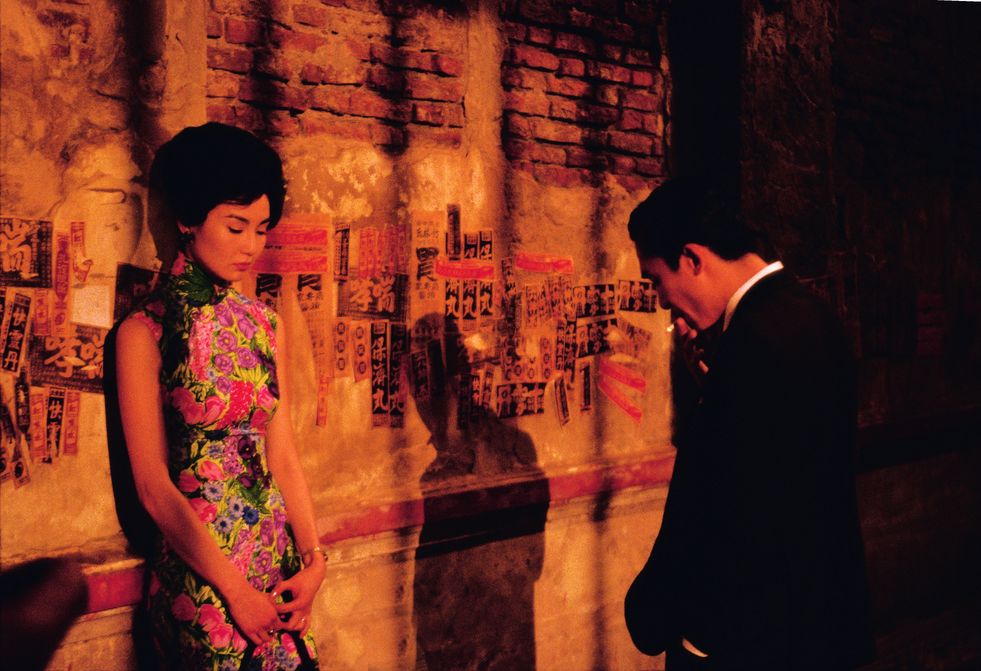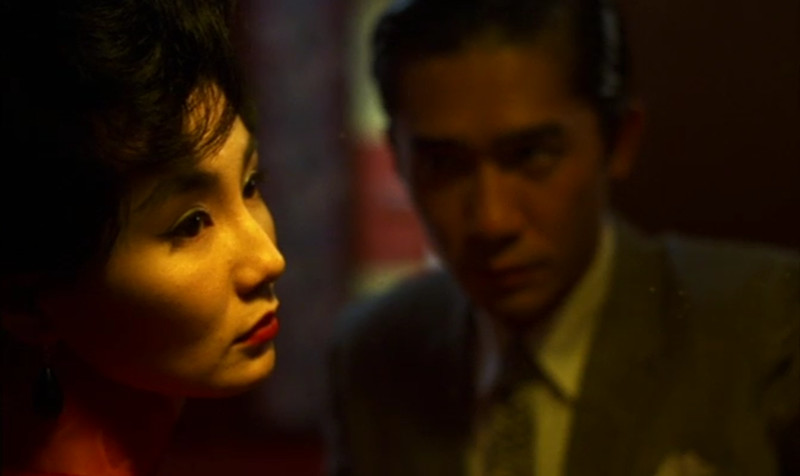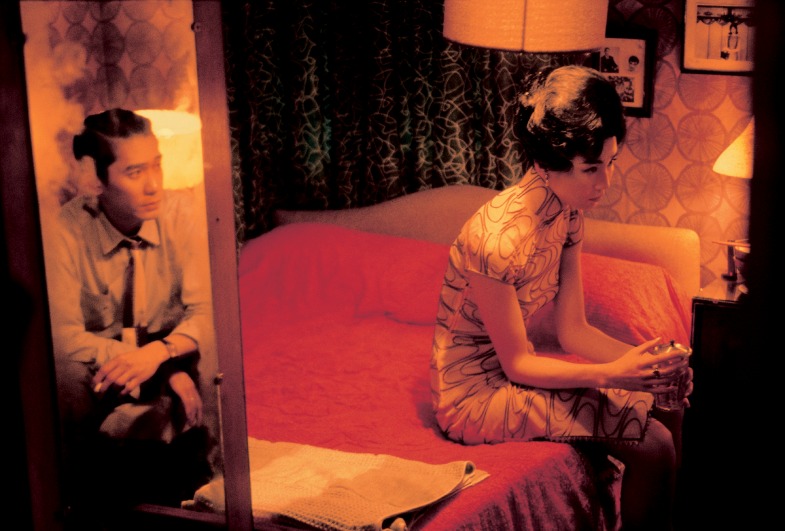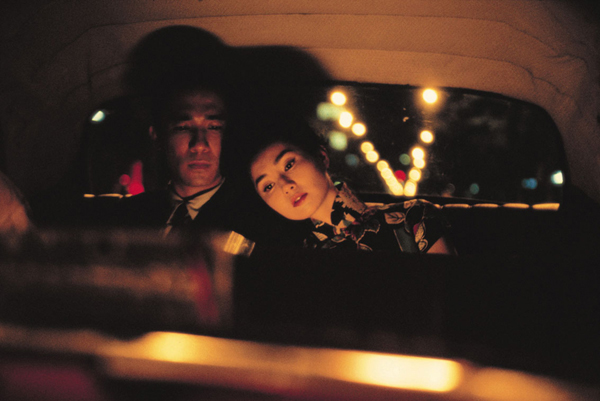
This little dream might fade
The opaque and ashen ache of stolen moments, and the often painful passage of time hangs heavy upon Hong Kong filmmaker Wong Kar-Wai, particularly in his masterpiece from 2000, In the Mood for Love. As anthem to the agony and ecstasy of close-lipped affection, this film, more than any other in Wong’s considerable oeuvre, is a Proust-like conjuration of memory and misgiving.
The second installment of a rather loose trilogy that began with Days of Being Wild (1990) and concluded with 2046 (2004), In the Mood for Love unravels in Hong Kong, 1962, centering on two neighbors living in a close quarters tenement house.
Maggie Cheung and Tony Leung shimmer as Su Li-zhen and Chow Mo-wan, the neighbors in question, who rightly suspect their respective spouses are having an affair. Leung and Cheung, it must be said again and again, are wondrous in these roles, and are every bit as iconic as Bogie and Bacall before them.
“The consummate unconsummated love story of the new millennium… Glances are exchanged, bodies brush against each other in hallways, hands are tentatively held…and then their buildup simply fades away before our very eyes.”
– David Fear, Time Out New York
And the moon and the stars and the world

The fugitive motions and fleeting looks of chiming clocks, the whorling of smoke rising from a cigarette, and the sentimental croon of Nat King Cole superabound Wong’s elegant period drama. Mr. Chow is something of a journalist, Mrs. Chan is a secretary for a shipping company, and soon the two of them will find themselves in the ephemeral fog of anguish, contrition, and the sweetest nostalgia.
As next-door neighbors in close approximation they soon discover that their spouses are always absent at the same time. Their lives intersect more and more and soon a strange and strained relationship forms between them both. As a sensual memory piece In the Mood for Love is luminous, and the slowly simmering romance therein is an inextricable blending of physicality and formalism.
“Wong Kar-wai leaves the cheating couple offscreen. Movies about adultery are almost always about the adulterers, but the critic Elvis Mitchell observes that the heroes here are ‘the characters who are usually the victims in a James M. Cain story.’ Their spouses may sin in Singapore, Tokyo or a downtown love hotel, but they will never sin on the screen of this movie, because their adultery is boring and commonplace, while the reticence of Chow and Su elevates their love to a kind of noble perfection.”
– Roger Ebert
Are you still mine? Were you ever?

A sad resignation haunts Mr. Chow and Mrs. Chan, moments of pure cinema truss pair as when they pass one another in the cramped corridor, or in slow motion as they’re tracked moving down one of the tiny tenement staircases.
Hazy, and dreamlike visuals come courtesy of Wong’s frequent collaborator, superstar cinematographer Christopher Doyle, and later his replacement, the somewhat more serene Mark Li Ping-bin (familiar to many as the DP of Taiwanese legend Hou Hsiao-hsien).
Deeper textures surface as the prying camera seems to almost eavesdrop on the couple as they soon find excuses to spend time with one another.
At a time when Hong Kong was socially extremely conservative, men didn’t spend time with women who weren’t their spouse, and their behaviour begins to draw suspicion. Perhaps this factors into their repression, which is truly only reckless for little more than an instant, but this buttoned-up appetite adds up to overwhelming urgency which will eventually drive them apart.
Beautiful hours move so quickly

The period details are never perfunctory and are essentially perfect––the cheong-san dresses that Maggie Cheung wears throughout the film are breathtaking in design and in detail.
The unfeigned hearts and flowers evoked by the soundtrack also adds to the atmosphere––Nat King Cole’s titular love song sweetly stings alongside the Bryan Ferry version as well as traditional pingtan and Beijing operas nestled among Shanghai pop music from the era. If these superlatives give the impression that In the Mood for Love is a tour de force, that’s exactly right.
“Filming In the Mood for Love was the most difficult experience of my career… [Problems] with censors, the departure of some members of my crew, and the challenge of telling an intimate story about only two people. We were physically and emotionally exhausted… “
– Wong Kar-Wai
Oh, is it any wonder?

In the Mood for Love was supposed to be made fast, dirty, and on the cheap, in a fashion not unlike Chungking Express (1994). Maybe it was inevitable that this project, a long gestating follow-up to Days of Being Wild, concerned with pain and longing, should inflict similar damage on its designer, for Wong’s anguish is palpable in every loving, wistful, and spectacularly detailed frame.
The bright colors and unconventional compositions that Wong’s name became synonymous with in the 1990s is here faultlessly fulfilled, even when hemmed in. In the Mood for Love renders on an intimate scale the intersection of misery and euphoria, of romance in retrospect, and makes it into cinema’s saddest song of love lost to history.
Author Bio: Shane Scott-Travis is a film critic, screenwriter, comic book author/illustrator and cineaste. Currently residing in Vancouver, Canada, Shane can often be found at the cinema, the dog park, or off in a corner someplace, paraphrasing Groucho Marx. Follow Shane on Twitter @ShaneScottravis.